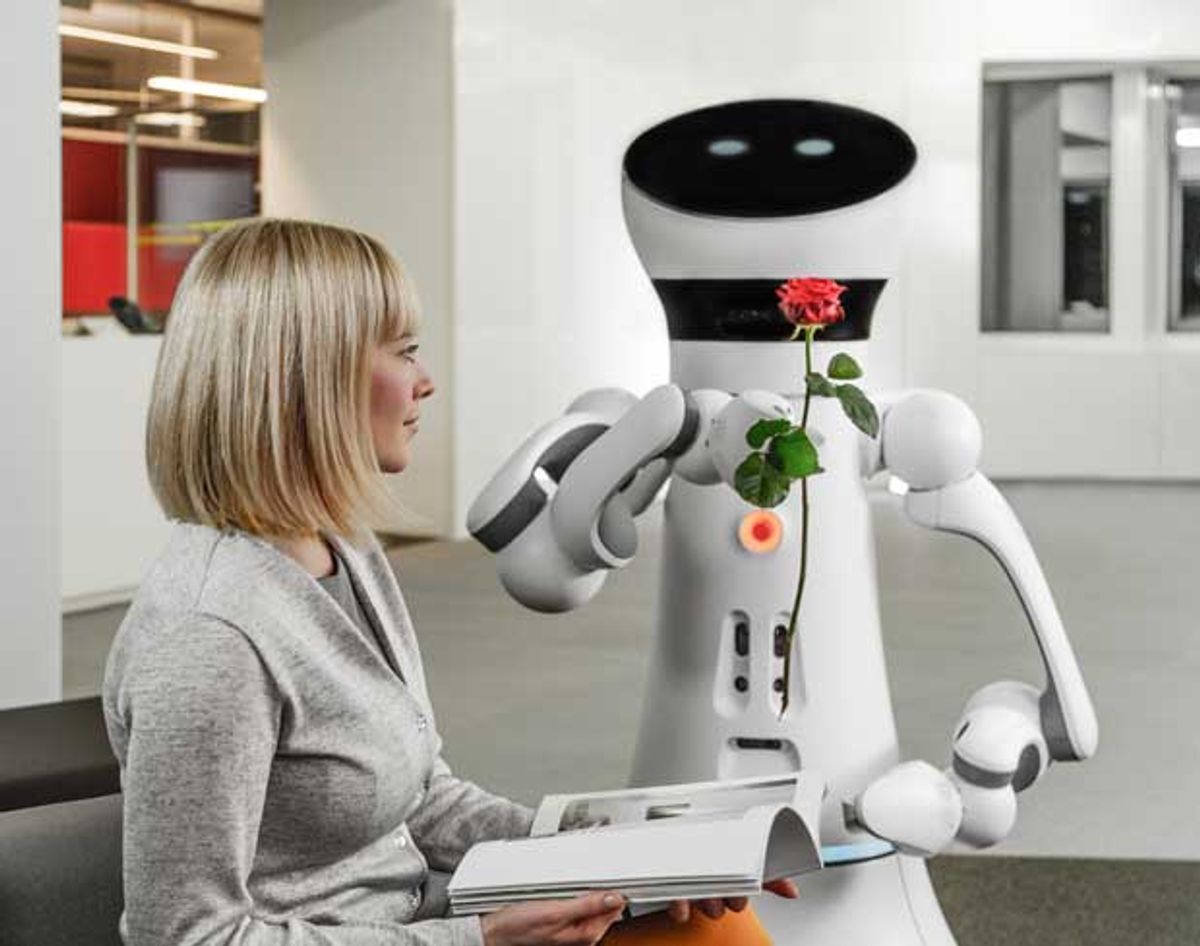Mobile manipulators are the robots we want, because they’re the robots that have the most potential to do the things that we care about: working in our homes and businesses, making things better and faster and easier. Robots have a long way to go before better and faster and easier become a thing that consumers get to experience directly, but with each new and updated platform, we get a little closer. Today, that little bit closer is the new and improved Care-O-bot 4, from Fraunhofer IPA.
First, check out this video of Care-O-bot 1. If I’m understanding the description correctly, it’s a video from 1997 illustrating what our lives are going to be like in 2005, thanks to robots:
The future was cool, uh?
Care-O-bot has gone through several iterations since then, including the squishily monolithic Care-O-bot 3. Introduced this week is the Care-O-bot 4:
The most interesting feature of Care-O-bot 4 (besides the dual arms and their jaunty motion) is its modularity. The robot is constructed out of five modules: base, torso, arms, sensor ring, and head. Each one of these modules can be swapped out depending on what you want the robot to do (and what your budget is).
For example, you can swap out the wheeled base for one that can move omnidirectionally. A spherical torso joint option allows the robot to bend over, if you want that. The sensor ring in the neck can come with a Kinect, a fancier time-of-flight sensor, or a custom one of your choice. And the head can be fixed, panning, or another spherical joint. There’s a neat little configurator tool that you can play with here.
The aesthetic has also had a major update, and one that Fraunhofer has put a lot of thought into. From the release:
Andreas Haug, co-Founder and Managing Director of Phoenix Design, adds: “Care-Obot 4 is a successful symbiosis of design and engineering, as well as functionality and emotion, which quickly encourages user interaction.” Its streamlined design, with two arms attached at the side and a type of head, mean that the robot is reminiscent of a human being. However, developers did not want its appearance to be over-human, as this would “encourage false expectations with regard to its capabilities” for users, says Ulrich Reiser. It is just the robot’s “internal values” which are human: it always maintains a respectful distance, shows what it has understood and what it intends to do, while also being able to make simple gestures and reflect emotions. As with previous generations, social role models were used as a guiding vision in developing the design and functionality. While the concept for the Care-O-bot 3 was a more reserved, cautious butler, its successor is as courteous, friendly and affable as a gentleman.
Fraunhofer says that in contrast to the previous generations of Care-O-bots, which were primarily technology development platforms, Care-O-bot 4 is “providing the basis for commercial service robot solutions.”
They’re still targeting developers, but with more of an eye towards commercial service applications, as opposed to lab-bound technology demos.
If, at this point, you’re thinking “wow, that robot is nice looking and capable, it must be very expensive,” you’re probably right. There’s no price information available, but we know that robots like that are expensive, especially the ones with enough sensors to work safely and reliably in environments infested with unpredictable humans, and especially especially the mobile ones that have manipulators so that they can, you know, do stuff.
So with robots like these, the question we have is: How do you make a substantial amount of progress toward anything that lots of people will be able to use on a regular basis? In other words, it’s hard to see the path towards commercial applications and ubiquity at this level of cost.
Sure, it might take big and fancy and expensive robots like Care-O-bot, PR2, Justin, and many others to figure out what useful things robots can do in the first place. But we’re already looking forward to Care-O-bot 5, which we’re hoping might, somehow, be affordable enough to provide assistance in our kitchen.
[ Care-O-bot 4 ] via [ ROS News ]
Evan Ackerman is a senior editor at IEEE Spectrum. Since 2007, he has written over 6,000 articles on robotics and technology. He has a degree in Martian geology and is excellent at playing bagpipes.





